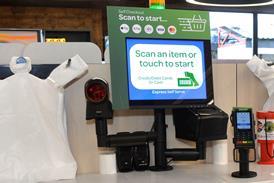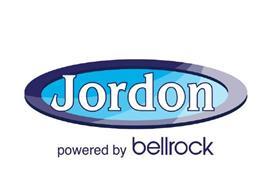Shell has taken a bashing over the years – and justifiably so many might think. A trawl through the press cuttings reveals a traumatic time with the fallout from mishandled retailer relationships, unsustainable contracts, nasty court battles, slumping market share, major network rationalisation and several rethinks over how its retail business should be run. That was the 90s, a bumpy ride for all as the industry adjusted to changing market forces.
But Shell is still here. Its management teams have had to dig deep as they struggled to grab back the reins of the retail business. It seems to be working.
For the past 18 months it’s been the turn of Mick McMahon, Shell’s retail director UK & Ireland, to keep the company pushing in the right direction. An Australian, with much experience working in Shell’s retail operations around the world as well as the UK, he took over from Ian Sutcliffe following two years of major restructuring.
“There had been significant reduction in costs and in the network; and significant change in the way we operated the sites, moving away from company operation to an agency agreement,” says McMahon. “We were coming out of that restructuring stage and had just launched Optimax (in August 2001). We were beginning to stop being internally focused and starting to look back outside at what we were doing in the marketplace.
“So I found a business that was quite lean and efficient. My aim was to take a more efficient platform and start to play more aggressively in the marketplace with it.”
What that means is that Shell is now very clear about the proposition it is offering its customers.
“It’s based around quality fuels and Optimax, but fundamentally around competitive pricing,” says McMahon. So one of the big initiatives Shell has been pushing over the past 18 months is to be very competitive on the pole sign. The combination of Optimax and competitive pricing means Shell volumes are growing at a “very significant rate”: “We’re pumping more fuel through a network that has closed 35 per cent of its company owned sites over a two-year period. Average fuel volume through company owned sites is six million litres,” says McMahon.
“We’re focusing on fuels and playing to our strengths. Shell Optimax does work and it works in the eyes of customers. We know because it sells. It has double-digit penetration of our overall fuel sales, and a very high per-centage of the premium market share. It’s well in excess of the business plan.
“Another important measure is capturing customer feedback. We have a website where Optimax regulars and enthusiasts visit and make comments. They are not just owners of the high-end performance vehicles, but motorists who put in a lot of miles.
“Optimax is also a product that responds well to promotion. We’ve tripled the amount of marketing spend on Optimax this year. There’s more TV work planned around the summer and the Formula 1 link – certainly Ferrari helps the credentials of the product.
“Also our dealers love Optimax, because being a premium product it’s the only way they’re going to earn extra margin. It also helps to grow sales.”
McMahon believes Optimax proves the market’s not just about price: “Obviously price matters, but it’s possible to get a premium (on Opti-max it’s about 4-5p) as long as the fuel is different, and the customer can
experience that difference. Our dealers recognise that and benefit from it. We also believe there’s room to grow Optimax sales.”
If Optimax is one of the major building blocks, another is to take the company’s more efficient structure, and put it to work in the marketplace.
“We’re pushing what we call ‘100 per cent competitive’, which is that we’ll match anybody in our local trading area. That coupled with Optimax and a focus on making the retail basics work – pumps always working, staying in stock – has meant that our like-for-like sales are rocketing ahead, and have been consistently now for the past 18 months.
“For the same sites last year we’re seeing 12 per cent like-for-like volume growth, and we’re growing market share in a market where for probably 10 years we were losing it.
“We think our market share is around 16 per cent and rising. It bottomed out at around 11.5 per cent.
“But I should say market share is not an objective of ours, it’s an outcome if the other things are right. What we want do is to get things right for the customer and be profitable. If we happen to do those two things the market share comes with it.”
Shell believes that if you want to run a network, being price-competitive across the network is the only choice. Rather than be concerned that margins are too low, the company has learned to live within whatever the margin is and be profitable. “A liveable margin, that’s the big issue. We do our planning at around 4p and lower, and tell our dealers to learn to live in a 4p world. We’ve learnt to plan for the worst and enjoy it if it’s better.”
But McMahon is not complacent. “While people might think the market is stabilising, technology and other innovations may mean that people find a different way to drive down costs and put more pressure on margins. We know larger supermarkets will always try to do that.
“Chip and pin gives the potential for companies to operate unmanned sites at a lower cost. Whether they do or not remains to be seen.”
MATURITY PHASE
Despite the focus on fuel and pricing, McMahon stresses that the shop is still important, although it is going through a ‘maturity phase’.
“You can put shops on the ground and you can increase sales; but converting that through to profitability is more of a challenge. We’ve learnt to simplify our core range of products – it is one-third of what it was – and tailored the proposition for customers on the move, so it’s all about impulse and convenience-oriented products such as drinks, confectionery and sandwiches. You might think a reduction to 1,200-1,300 SKUs would cause a drop in sales, but they’ve grown.
“We’ve got the proposition to the customer right with a limited range that is easier to operate. We’ve simplified the logistics, and the supply chain, and drastically reduced costs – we don’t have our own warehouses or trucks. We do all that with P&H and we’re very happy with the arrangement – it works extremely well for us.
“It’s important to say that the Sainsbury’s arrangement is there not because of a failure in our shop business, but simply because having Sainsbury’s on around 100 sites – subject to planning permission – is better for those sites. On a sales per sq m basis three of the six trial sites are in the top 20 sites overall in the country. Also, sales significantly increase on conversion to Sainsbury’s.
“But that still leaves 450-500 company sites, on which we expect to have a healthy, vibrant and growing offer under the Shell brand. We remain committed to the shop side of our business. That’s why we are looking at a refurbishment of that offer and will be putting some trial sites on the ground this year. The first will be in the south, Burgh Heath in Surrey, in the autumn.”
As regards the retail network, McMahon says the company is committed to a dealer channel.
“We have about 480 dealers. We’ve been encouraging our dealers through things like Optimax and competitive pricing – along the same lines as the company channel. Dealers need to grow their throughputs and grow an alternative source of income at the site, whether that be a store or car sales or whatever. However, I would like to see an improvement in operational standards across the dealer network, so that for a customer there should be a seamless transition whether they’re on a dealer or a company owned site.
“Many sites will need reinvestment – whether that be in refurbishing the pumps or signage, or in the store, systems or underground tankage. I think the industry is at a critical point where many operators will have to consider if they can they afford to reinvest. And that’s going to be the challenge over the next few years – to enable those sites who are long-term players to find ways to economically upgrade their offer to what the customer expects today.
“Our average dealer throughput is around three million. Choosing dealers is primarily about profitability. But I have to run a network and in that context, I think sites below two million litres will struggle.”
On the subject of retailer relationships McMahon pays tribute to his predecessor Ian Sutcliffe who he says did a fantastic job, not only in achieving an efficient structure, but also in repairing some of those relationship issues. “I think they are much improved – the PRA dealer survey reinforced that – we were very happy we were the most improved.
“It helps that the business is growing. We’ve also put more effort into the engagement with dealers in roadshows and we will continue that.
“We have certainly stabilised the dealer channel, and done even better than that on the company channel – we have a very healthy relationship.”
The Shell ambition is to be number one in this market. “We can compete head to head with anyone in the market,” says McMahon. We’re very happy where we’re going.”























No comments yet